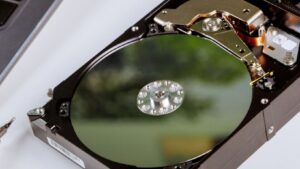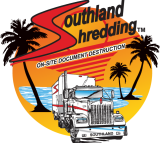
The hard drive destruction process is a critical step for businesses and individuals alike to protect sensitive information from falling into the wrong hands. This process involves several steps to ensure that the data stored on the drive is destroyed and cannot be recovered. Here’s an overview of the typical process:
Step 1: Identify The Hard Drive
First, it’s essential to identify which hard drive needs to be destroyed. This may seem obvious, but in large organizations with multiple devices, it’s important to keep track of all hardware and ensure no data is left vulnerable.
Step 2: Backup Important Data
Before beginning the destruction process, backing up any important data stored on the hard drive is crucial. This way, if critical information needs to be retained, it can be transferred to a new device.
Step 3: Preparation For Destruction
Once the hard drives have been identified and backed up, the next step involves preparing them for destruction. This often means removing the hard drives from their enclosures or devices, if necessary. Ensuring that each hard drive is easily accessible and free from any protective casing is crucial for allowing the destruction methods to be as effective as possible.
Step 4: Scan Each Drive
After the preparation phase, it is paramount that each hard drive and SSD is scanned before shredding. This step is crucial as it allows for creating authoritative records complete with individual drive identification. These records serve as proof of destruction and ensure that every piece of data, regardless of its location on the physical media, has been accounted for and securely destroyed. This meticulous approach to data security safeguards against potential data breaches and contributes to the integrity of the destruction process.
Step 5: Secure Transportation And Destruction
Hard drives are picked up directly from your location and securely transported to a specialized destruction facility. This means shredding the hard drive into small pieces, ensuring the data is unrecoverable. Some companies also offer on-site destruction options for added security. Handling the destruction off-site ensures that all the employees’ work remains uninterrupted and they are not exposed to noise pollution. This step is integral to maintaining a seamless operation flow and ensuring the confidentiality of the destruction process.
Step 6: Certification
After the hard drives have been destroyed, you will obtain a certificate of destruction from the data destruction company. This is an official document that serves as proof that the hard drives were destroyed thoroughly and in compliance with industry standards. It should include details such as the date, time, and method of destruction. This certificate can be used for legal purposes, regulatory compliance, or peace of mind.
Step 7: Disposal
Once the hard drives have been shredded and a certificate of destruction has been obtained, the final step is proper disposal. This may involve recycling or disposing of the material in an environmentally-friendly manner.
Compliance With Regulations
Ensuring compliance with legal and environmental standards is a non-negotiable aspect of the hard drive destruction process. Different regions have specific laws and regulations pertaining to electronic waste and data protection. Businesses and individuals must stay informed about these requirements to avoid legal repercussions. Working with a certified destruction company often guarantees adherence to these standards, as they are well-versed in hard drive disposal’s legal and environmental aspects.
Environmental Impact And Sustainability
The environmental impact of hard drive destruction, if not conducted responsibly, can be significant. Thus, the destruction method and the subsequent handling of waste materials are key considerations. Many data destruction companies are adopting eco-friendly practices, prioritizing recycling and the responsible disposal of electronic waste. This mitigates harm to the environment and aligns with the growing demand for sustainability in all sectors. By choosing a destruction service that values environmental stewardship, businesses can ensure that their data security measures do not come at the expense of the planet’s well-being.
Conclusion
Secure data destruction is not just a good practice; it’s a necessity. The risks of not safeguarding your data during its disposal can be catastrophic, and the benefits of a comprehensive data destruction plan are clear. By choosing a reputable data destruction company, you can ensure your sensitive information remains safe and secure.
Southland Shredding is dedicated to providing secure and environmentally responsible data destruction services. Contact us today to learn more about our comprehensive solutions for your business’s data security needs.




